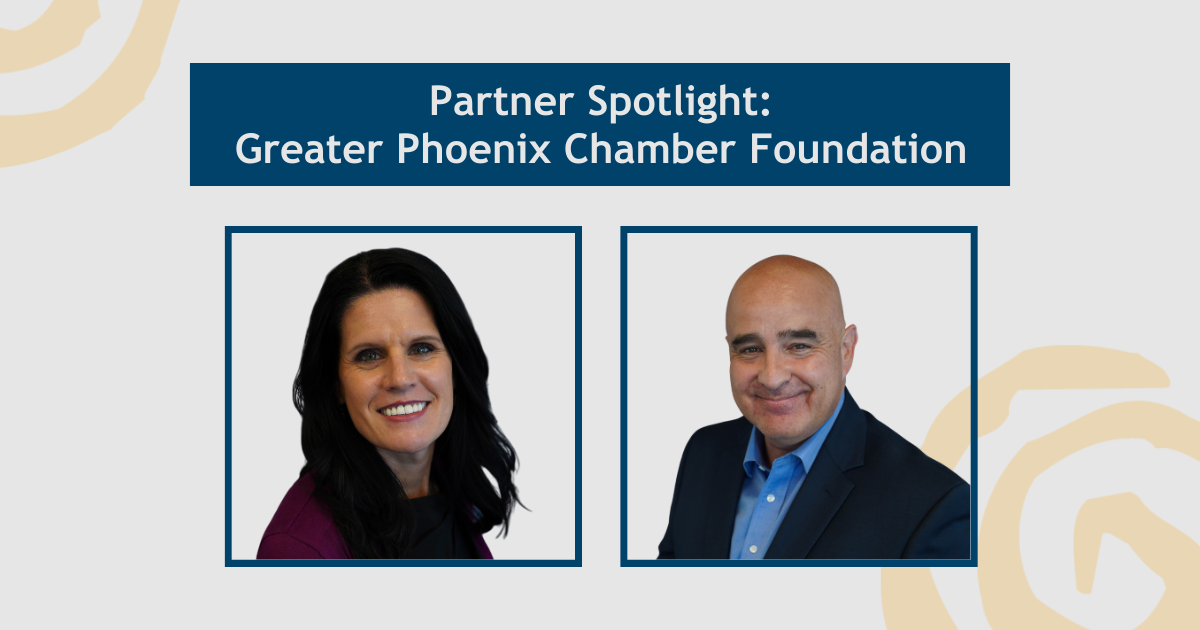Partner Spotlight: Greater Phoenix Chamber Foundation
With the support of a $950,000 grant from Helios, the Foundation’s ElevateEdAZ will help expand access to dual enrollment
The Greater Phoenix Chamber Foundation’s ElevateEdAZ initiative has been focused on partnering with industry on workforce solutions that put high school students on a pathway to high-wage jobs in the 21st-century economy.
In recent years, the initiative has put more resources, time, and energy into expanding dual enrollment opportunities for students. This comes as Helios research shows that dual enrollment courses are foundational to success in college and beyond.
That work will continue to grow: With the support of a $950,000 Helios grant, ElevateEdAZ will identify and address student barriers to enrollment and provide incentives to teachers to get dual enrollment certified in key courses over the next year.
Why it’s important to make access to dual enrollment equitable
A major pillar of the work will be ensuring equitable access to students throughout the state of Arizona, especially those in underserved communities. It’s a goal that aligns with Helios’ mission to improve education outcomes for low-income and Latino students in Arizona.
“When we talk with employers, they tell us they want a workforce that mirrors their community,” said Jennifer Mellor, chief innovation officer of the Greater Phoenix Chamber Foundation. “In order to do that, we really have to touch the underserved communities where a lot of these companies are operating.”
Greater Phoenix Chamber president and CEO, Todd Sanders added “It makes sense from an economic development perspective to ‘capture the whole economy’ and to look at education solutions in a holistic way.”
“If these kids aren't participating right now in that part of the education system, then let's make sure that they do that,” he added. “It makes us all stronger, and makes them stronger generationally, and it certainly makes our economy more resilient.”
Dual enrollment courses enable high school students to earn college credits, giving them a head start in college and reducing tuition costs. Helios research shows that high school students who take dual enrollment courses are more than twice as likely to attend college compared to students who don’t.
They’re also more likely to stay enrolled, earn better GPAs, and complete their degrees.
But access to the coursework is not equitable across the state. Only about 25 percent of Arizona high school students take the courses, and traditionally disadvantaged students are less likely to have access to the courses.
The grant will allow ElevateEdAZ to build upon a 2022-2023 school year project with Mesa Public Schools and Phoenix Union High School District, which led to a remarkable 40 percent increase in dual enrollment in the fall of 2022.
New state funding helps Arizona students pay for dual enrollment
With the Helios grant, ElevateEdAZ will take the strategies that worked in Maricopa County and expand them statewide. That includes letting students and families know there is now tuition assistance available, thanks to $15.5 million approved in the state budget to help offset the cost of dual enrollment tuition for students from low-income backgrounds.
The state appropriation also includes incentives for teachers that get certified in dual enrollment. Both Helios and the Greater Phoenix Chamber were closely involved in supporting the legislative appropriation.
“We’ll be laser-focused on the teacher certification process so that we can get as many teachers certified next year as possible,” Mellor said.
The overarching goal is to get students to understand that they have a pathway to a high-wage, high-demand careers, and that can be directly through employment, or it can be directly through post-secondary education, Mellor said.
“In order for students to be successful, they need to be able to have access to those opportunities,” Mellor added. “And the more we can get them to pursue these college courses early on, the more likely they are going to be successful.”
Learn more about ElevateEdAZ

